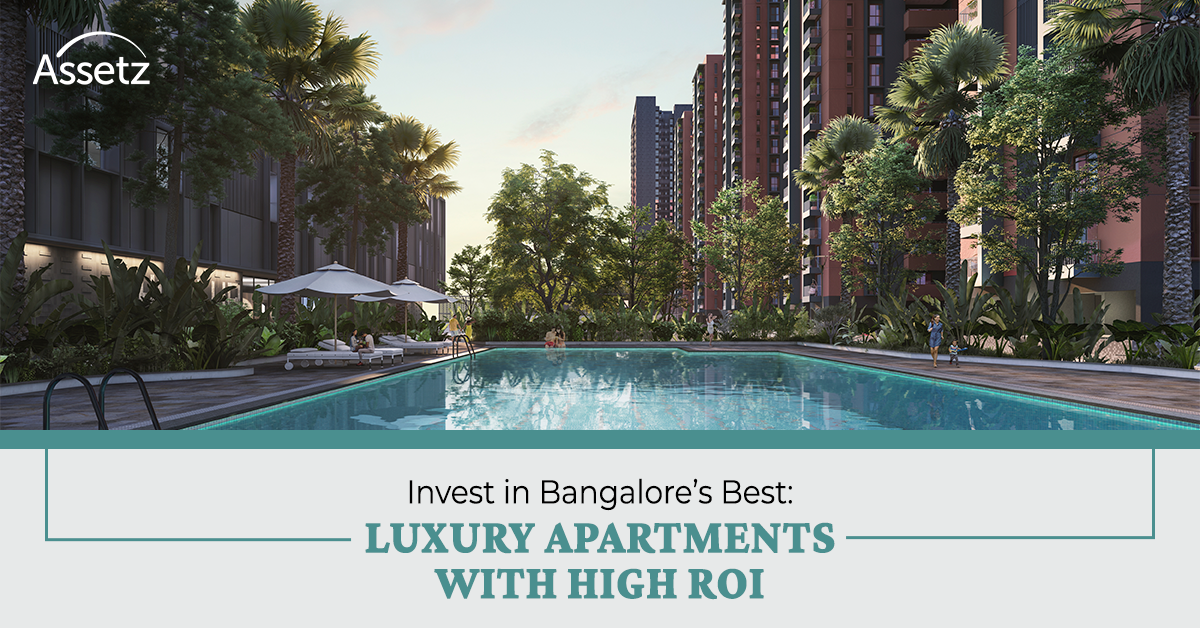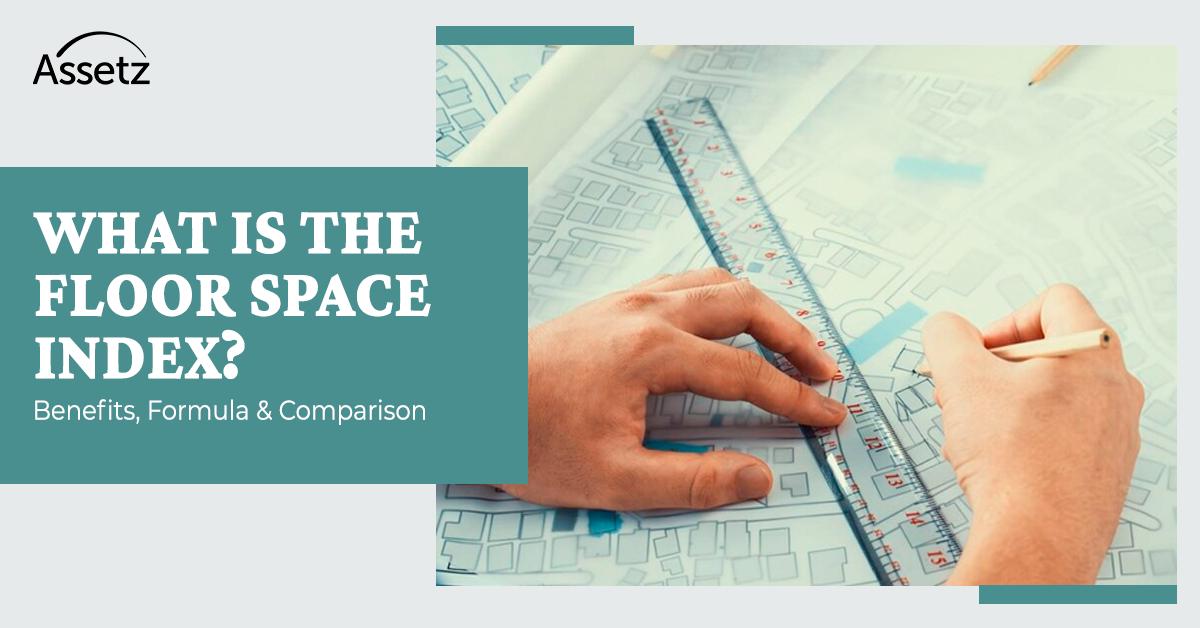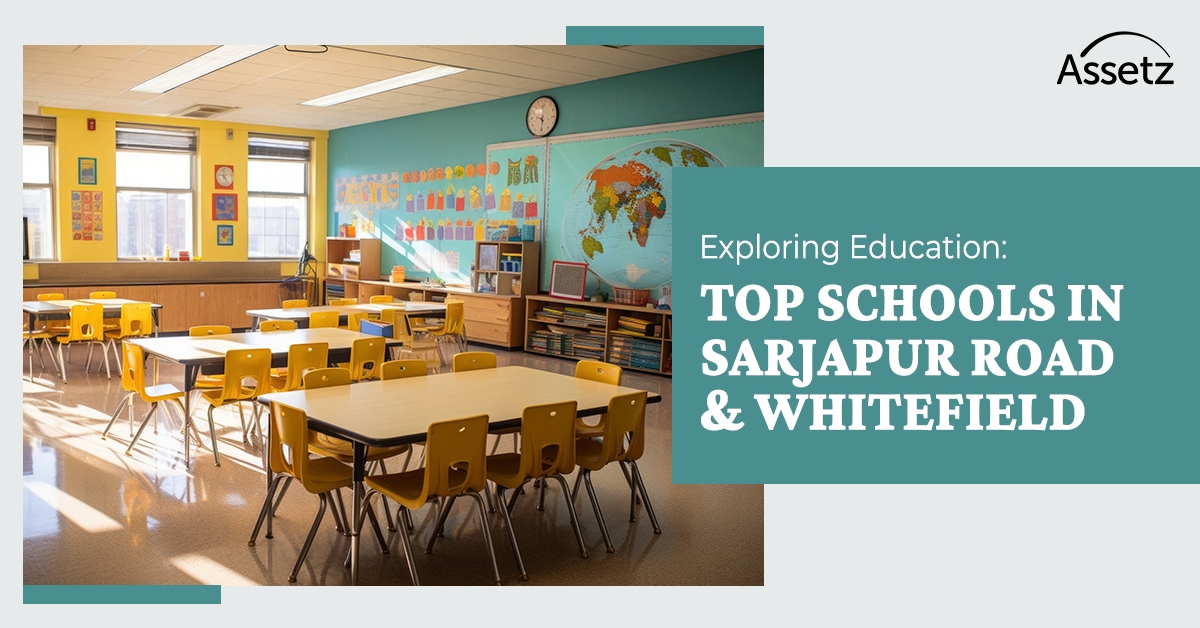Bangalore, India’s Silicon Valley, has emerged as a prime spot for real estate. With the city’s thriving economy causing significant demand for luxury living spaces, this growing market has opened up a golden chance for buyers seeking high returns and a luxurious lifestyle.
Buying luxury properties in Bangalore isn’t just about living well anymore; it’s a smart financial move. This blog delves into Bangalore’s luxury apartment market, highlighting the key factors that make India’s Silicon Valley a compelling investment opportunity in the near future.
Bangalore’s Economic Growth and Its Impact on Real Estate
Bangalore’s growth as India’s IT centre has been a defining factor in its real estate surge. The city’s economic strength has drawn in a huge number of professionals, business owners, and global companies.
IT Industry Boom: The thriving IT industry in Bangalore, has significantly contributed to the city’s growth. This boom has given rise to numerous successful IT and IT-related service firms, attracting a highly skilled and well-paid workforce from all over the world. With higher disposable incomes, these professionals increasingly seek premium living options, driving the demand for luxury apartments in Bangalore.
Startup Ecosystem: Bangalore’s flourishing startup ecosystem has fostered a new generation of entrepreneurs and investors. The success of these startups has led to a significant increase in wealth, heightening the demand for luxury properties in Bangalore. The influx of young, successful entrepreneurs has introduced a new consumer segment with a taste for the finer things in life. This growing demographic has contributed to the demand for high-end apartments in Bangalore, as they seek luxurious and convenient living spaces that align with their lifestyle and professional aspirations.
Multinational Corporations: Bangalore has emerged as a premier destination for multinational corporations, attracting global giants to establish their presence in the city. This influx of major companies has also brought with it a significant rise in the expatriate population. These professionals seek more than just a place to live—they look for residences that offer the highest standards of quality and comfort. As a result, the demand for premium housing has surged, with luxury apartments becoming the preferred choice for expats who desire modern, world-class living spaces.
Infrastructure Development: Bangalore’s rapid economic expansion has been propelled by improvements in infrastructure, enhancing its accessibility. The city’s transportation network has seen a transformation, with the extension of the Namma Metro lines improving connectivity across all regions. Additionally, the development of strategic expressways has not only streamlined internal traffic flow but also strengthened links to neighbouring towns and major cities, resulting in greater regional integration. The expansion of the world-class Kempegowda International Airport has further cemented the city’s role as a global gateway for international business and talent. These developments have, in turn, triggered a surge in demand for luxury real estate, with both businesses and residents seeking modern and well-connected living spaces.
Why Invest in Luxury Apartments in Bangalore?
High Rental Yields
Luxury properties in Bangalore command high rental rates, driven by several compelling factors. A limited supply of high-end properties, coupled with strong demand from expatriates, corporate executives, and high-net-worth individuals, has created a highly favourable rental market. This demand-supply dynamic provides investors with consistent and attractive rental income.
Capital Appreciation
The real estate market of the city has consistently demonstrated a robust pattern of price appreciation, fueled by the city’s economic growth, rising population, and infrastructure advancements. These factors have created an environment of sustained value increase, making luxury apartments in Bangalore a highly attractive investment option. With the potential for substantial capital gains over time, investing in luxury properties in Bangalore offers investors not only a prestigious asset but also a lucrative opportunity for long-term wealth creation.
Luxury Lifestyle
Investing in luxury apartments in Bangalore transcends financial returns; it opens the door to an elevated and sophisticated lifestyle. Beyond the tangible benefits of appreciation and rental yields, residents enjoy a living experience marked by world-class amenities. Luxury residential projects in Bangalore often feature state-of-the-art fitness centres, tranquil spas, and temperature-controlled swimming pools. For relaxation and socialising, residents can take advantage of international-standard clubhouses, serene Zen gardens, and exclusive entertainment areas as well. Many developments also offer concierge and lobby services, adding an extra layer of convenience and luxury to everyday life.
Further, these upscale communities create a bespoke sense of connection, drawing together like-minded individuals who share similar values and aspirations, enhancing the overall quality of life in these developments.
Tax benefits and investment advantages
Luxury apartments in Bangalore offer not only a high-quality lifestyle but also significant tax and financial benefits. Property ownership can provide attractive tax benefits, including deductions on home loan interest and property taxes. Furthermore, real estate investments tend to be a hedge against inflation, with the potential for regular income generation through rent.
The recent changes introduced in India’s tax laws have made luxury property investments even more appealing. Effective from April 2024, the Long-Term Capital Gains (LTCG) tax on real estate transactions has been reduced from 20% to 12.5%. This change encourages simplicity in tax calculations.
In light of these changes, Bangalore’s luxury apartment market is expected to grow further, driven by increased interest from high-net-worth individuals who seek both tax efficiency and asset appreciation.
Bangalore: The Ideal Location for Luxury Living
Bangalore seamlessly merges contemporary living with its rich historical heritage, making it a sought-after destination for both residents and businesses. The city’s diverse cultural fabric, bolstered by good infrastructure, top-tier healthcare facilities, and prestigious schools, creates an environment that appeals to a global audience.
The vibrant arts, culture, and culinary scenes offer something for every taste. Whether it’s dining at exceptional restaurants, enjoying artisanal creations at chic cafés, or exploring bustling farmers’ markets and cultural festivals, Bangalore offers a wealth of experiences for those seeking sophistication and leisure.
Nature enthusiasts also find solace in the city’s numerous parks, gardens, and lakes, which provide tranquil retreats from the urban buzz. These green spaces offer a perfect balance of relaxation and recreation, cementing Bangalore’s reputation as a haven for those who appreciate outdoor living amidst the comforts of a cosmopolitan lifestyle.
Tips To Keep in Mind While Investing In Luxury Apartments in Bangalore
- Study the Market: Know the rental returns, and how property values change in different micro markets across the city.
- Check the Location: Focus on places with good connectivity and room for further development in the future.
- Builder’s History: Pick a reputed builder who has built high quality projects and has obtained good reviews from their customers.
- Consider Security and Privacy: High-end properties prioritise security features and offer exclusive living spaces with privacy and peace of mind.
- Plan Your Money: When you make your budget, think about property taxes, upkeep costs, and how much rent you might receive if you are considering leasing the property.
- Ask the Experts: Consult with real estate professionals, financial advisors, and legal experts for insights and advice on investing in luxury properties.
Bangalore’s charm as a dynamic metropolis, coupled with its booming economy, has turned it into a hotspot for high-end living. The luxury apartments in Bangalore have witnessed substantial growth, offering investors an opportunity to capitalise on this upward trend. As Bangalore continues to evolve, the demand for exclusive and luxury apartments is expected to increase, making it an appealing market for those looking to mix lifestyle with investment.
With a proven track record of developing exceptional luxury residential projects, Assetz Property Group offers a commitment to quality, innovation, and unparalleled living experiences. Discover residences that perfectly blend contemporary design, world-class amenities, and a prime location, ensuring your investment in Bangalore’s luxury market is a thriving one.








